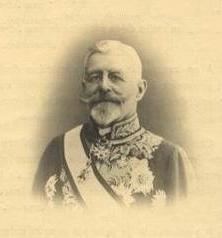Eligibility Belgian civilians Established 21 July 1867 | Status Currently awarded | |
 | ||
Type Decoration (cross and medal) Awarded for Meritorious, long service or exemplary behaviour or act | ||
The Civic Decoration (French: Décoration Civique, Dutch: Burgerlijke Ereteken) is a civilian decoration of the Kingdom of Belgium. It was first established by royal decree on 21 July 1867 to reward exceptional acts of bravery, devotion or humanity. A further royal decree of 15 January 1885 extended the award to state civil servants for long service by a mere change of ribbon. The award statute was once again amended by royal decree in 1902 to include long service in the Civic Guard and firefighters, each with its distinctive ribbon.
Contents
- Classes
- Award criteria
- Award description
- Civic Cross 1st class
- Civic Cross 2nd class
- Civic Medal 1st class
- 19141918 Civic Cross 1st class
- 19141918 Civic Cross 2nd class
- 19401945 Civic Cross 1st class
- References
Two wartime variants were created to reward civilians who distinguished themselves during the World Wars. The Civic Decoration 1914–1915 (later dated 1918) was created on 18 May 1915 to reward civilians and non-combatants who served their country with distinction during World War I. A similar Decoration was also established for World War II on 21 July 1944 by the Belgian government in exile.
The Civic Decoration, previously solely awarded by Royal Decree, has been awarded directly by regions and communities since the 1993 federalisation of Belgium.
Classes
The Civic Decoration is awarded in two categories:
These classes are common to all the types of the Civic Decoration.
Award criteria
The Civic Decoration for long and distinguished service in the administration and firefighters is awarded:
The Civic Medal Third Class (bronze), which was principally intended for award to indigenous personnel in the colonies, is no longer awarded.
The Decoration for exceptional acts of bravery, devotion or humanity is awarded on a case-by-case basis.
Award description
The badge of the Civic Cross is a white enamelled maltese cross with the central medallion bearing the monogram of King Leopold I or of King Albert I (for the 1914–1918 Cross) on the obverse and reverse. Between the arms of the Cross are:
The cross 1st class is gilt, the second class is silver.
The Medal is vaguely octagonal and looks like a closed florian cross, it bears the relief image of the Civic Cross. The medal for 1914–1918 is topped with crossed swords, the medal for 1940–1945 is topped with crossed flaming torches. The medal first class is gold, the second class is silver and the third class is bronze.
The ribbons of the Civic Decoration and Medal differ with the type of award:
The ribbons of the war time awards are adorned with a metal clasp bearing 1914–1918 or 1940–1945.
